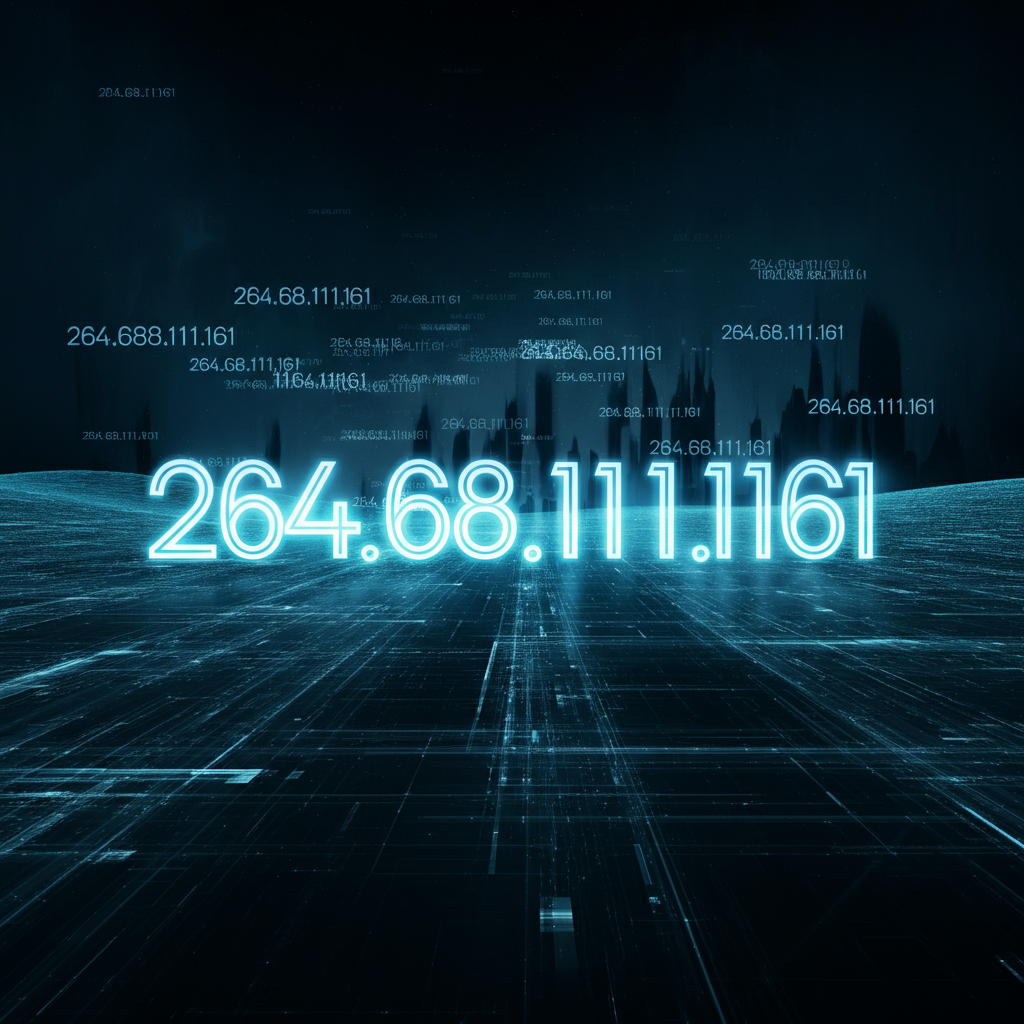If you’ve come across the sequence 264.68.111.161, you may have found yourself wondering, “What is this? Is it an IP address? Is it valid?” To explain, we first need to understand the basics of IP addresses and determine how 264.68.111.161 fits into that framework.
This blog will break down IP addresses, explain how they work, and ultimately discuss why 264.68.111.161 does not fit within the established rules of valid IPv4 addresses. Whether you’re a tech enthusiast, a cybersecurity professional, or simply curious about internet technology, this post will cover all you need to know.
What is an IP Address?
An IP address (Internet Protocol address) is a numerical label assigned to devices—like computers, smartphones, and servers—connected to a network that uses Internet Protocol for communication. Think of it as a device’s home address, allowing data to be sent and received between devices over the internet.
Types of IP Addresses
There are two main types of IP addresses:
- IPv4 (Internet Protocol version 4):
-
-
- Composed of four numerical octets separated by periods (e.g., 192.168.1.1).
- Each octet ranges from 0 to 255.
- Example of valid IPv4: 172.16.254.1.
-
- IPv6 (Internet Protocol version 6):
-
-
- A more recent protocol designed to accommodate the growing number of internet-connected devices.
- Uses eight groups of hexadecimal values separated by colons.
- Example of valid IPv6: 2001:0db8:85a3::8a2e:0370:7334.
-
Why Do IP Addresses Matter?
Without IP addresses, devices would not be able to locate or communicate with each other. They are essential for activities ranging from checking your email to streaming your favorite TV show.
IPv4 and Its Range
Each of the four segments (octets) in an IPv4 address can contain numbers between 0 and 255. This is because each octet represents an 8-bit binary number, and the maximum value of an 8-bit binary number is 255.
For example:
- 192.168.0.1 is valid because all octets fall within the 0–255 range.
- 256.123.45.67 would be invalid because the value of the first octet exceeds 255.
This understanding brings us to the specific case of 264.68.111.161.
Analyzing 264.68.111.161 as an IPv4 Address
At first glance, 264.68.111.161 resembles a standard IPv4 address. It has four numerical segments separated by periods. However, a closer look will reveal that it fails to meet the required format for a valid IPv4 address.
Why is 264.68.111.161 Invalid?
- Exceeding the Octet Range:
-
-
- The first segment, “264,” exceeds the maximum allowable value of 255 for an IPv4 octet.
- IPv4 addresses cannot contain any segment greater than 255, so this address is immediately invalid.
-
- No Context for IPv6 Formatting:
-
-
- If you were expecting this to be an IPv6 address, it does not match the required hexadecimal format or structure.
-
Examples of Valid IPv4 and IPv6 Addresses
If you’re troubleshooting an IP address or working to configure a device, here’s a quick comparison:
- Valid IPv4 Address: 192.0.2.1
- Valid IPv6 Address: fe80::1ff:fe23:4567:890a
- Invalid IPv4 Address: 264.68.111.161 (first octet is out of range)
Common Misunderstandings about IP Addresses
Understanding why some IP addresses are invalid can help avoid errors when configuring networks. Let’s clear up a few misunderstandings:
IP Addresses Aren’t Random
Each IP address follows strict rules defined by the Internet Assigned Numbers Authority (IANA). These rules ensure consistency and compatibility across the global internet.
Can “264.68.111.161” Be Corrected?
To make it valid, the first number (264) would need to be adjusted to fall between 0 and 255. For example, “192.68.111.161” would be a valid IPv4 address.
Typographical Errors Happen Often
Sometimes, IP addresses can appear invalid due to typographical errors. Double-check all inputs for mistakes before assuming an address is unusable.
Why Understanding IP Addresses Is Crucial
IP addresses are the backbone of internet communication and are vital for functions like:
- Website Hosting: Your favorite websites, like Google and Amazon, have associated IP addresses.
- Cybersecurity: Knowing how IPs work can help identify and prevent unauthorized network access.
- Troubleshooting Connectivity Issues: Understanding IP ranges helps in identifying and fixing network configuration problems.
A misconfigured or invalid IP address, such as 264.68.111.161, can lead to communication errors or issues in your network setup.
Wrapping It Up
While 264.68.111.161 may seem like a valid IP address at first glance, it does not conform to the standard format of IPv4 addresses due to its first segment exceeding the allowable range (0-255). IP addresses, whether they belong to IPv4 or IPv6, must adhere to strict numerical parameters to function correctly within the global network.
Understanding these fundamentals can help users prevent common networking errors and ensure seamless device communication. Whether you’re managing a home network, configuring a business system, or simply satisfying your curiosity, knowing the rules of IP address formatting is essential.

